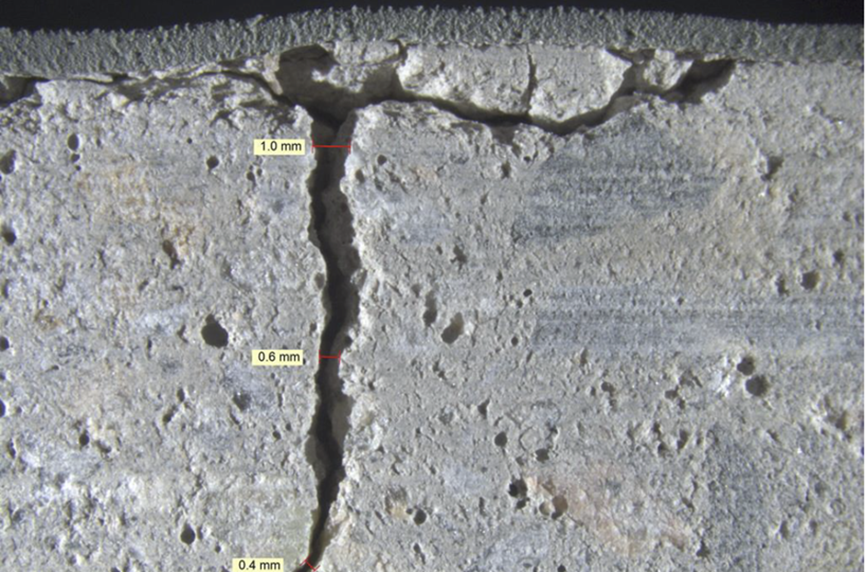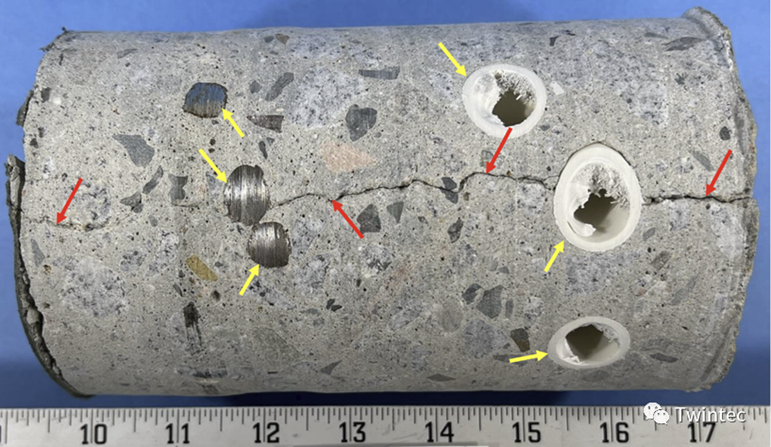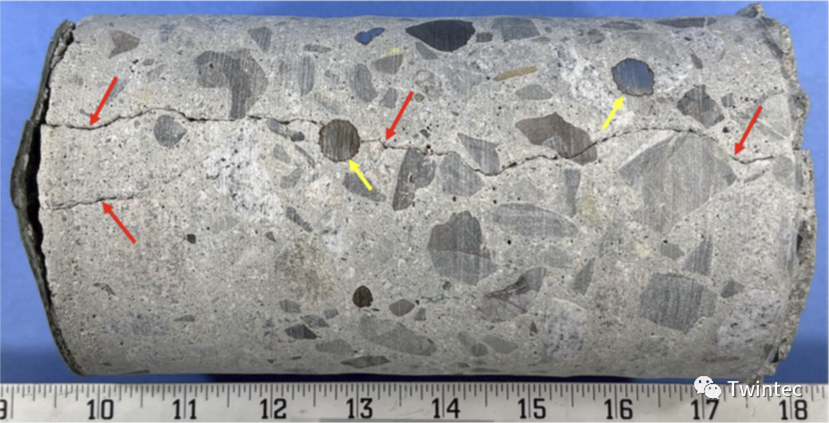Forensic analysis of concrete crack formation in elevated slabs
Published on 31 August 2023

Twintec Group as technical specialists in design & construction of industrial concrete flooring offer a range of services to investigate potential defects that occur in concrete floor slabs.
Highly experienced engineers, material specialists and application knowledge gained over many years enables Twintec to offer forensic analysis, provide recommendations and where required carry out remedial works.
Felix He Yong, General Manager, Twintec China explains how the investigation of unexpected cracking in elevated slabs in China, required analysis of several factors to establish probable causes:
1. Design
First course of action is a design check, to ascertain if the thermal stress, column span, beam and slab strength, reinforcement ratio and type of structure are properly addressed in the design. Experience indicates that it is rarely the cause of random cracking of such slabs, given structural designs undergo robust approval processes.
2. Materials
Design institutes and clients provide basic specification of materials like steel grade, w/cm ratio of concrete, slump, temperature of concrete and aggregates etc. Concrete is the main building material for the structure and slab, but in common practice it is not easy for client/MCs/floor contractors to get the same mix as shown on the mix design sheet. This can indicate problems such as the shrinkage exceeding design limits, segregation, delayed/fast setting and poor strength.
3. Execution
Poor execution of a well-designed slab, even with quality materials can bring undesired results. Factors to consider, but often difficult to confirm post construction are placing, vibration, screeding, finishing and curing. Photographs or video footage if available are useful for post execution evaluation. Consideration is required as to the temperature, humidity and weather protection on site.
4. Improper loading
Consideration needs to be given to establish if the slabs were loaded much earlier than the prescribed timeframe. This may cause problems if the strength of the slab is not yet enough to carry the load. Load will cause stresses which consequently can cause defects including cracking of the slab.
5. Pattern and stage of cracking
There are many different types of cracking, and each has a certain pattern and unique characteristics. Cracking can happen at different stages of the life of the concrete slab, during the plastic and hardened stage. There may be different reasons and causes so site investigation and crack mapping are needed for cracking analysis along with petrographic studies in the lab.
Case Study
On a recent project where Twintec China were appointed to carry out a forensic analysis of cracking on a project in Southern China. The project was constructed during extremely hot summertime, which needs special attention for quality concreting. To determine the possible causes of cracking, and especially for suspected poor material quality and execution, Twintec China initiated taking concrete cores for petrographic study to provide a detailed analysis of materials used.
Petrographic analysis provides important information on:
-
Concrete mix design and aggregate
In this project, petrographic analysis reveals that: the W/CM ratio, the aggregate resource and the cementitious materials are not in accordance with specified concrete mix design. This gives an overall much greater shrinkage of the material.
-
Execution of the slab
Video evidence showed that the placing and vibration of the concrete is acceptable, but the carbonated weak layer on top of the concrete surface suggests poor curing of the concrete slab. With extreme hot weather conditions, this will cause problems, including cracking.
-
The petrographic analysis confirmed the cracking stage and type, which matched the results of onsite investigation.
This cracking happened in hardened stage of concrete with significant strength, even aggregates are teared cracked. The laboratory study also tells there is no evidence of early age cracking, ASR and reinforcement movement cracking in plastic stage.
To read the full case study - Click here.
Conclusion
-
Defects analysis is a specialist subject. Twintec as specialist in concrete design and construction has all the know-how and experience on the whole process, design, materials and application.
-
QA and QP are essential and especially when concreting in hot weather.
-
Strength of concrete is only one factor of the materials whereas poor material quality will always bring higher shrinkage and be accelerated by temperature decrease. Special concrete mix design is needed.
-
Appropriate and timely curing is essential for concrete to develop strength.
Click here to follow us on LinkedIn.
For more info contact: info.china@twintecgroup.com.
Posted by
Felix He Yong


Comments
If you liked this article please share it or add a comment below